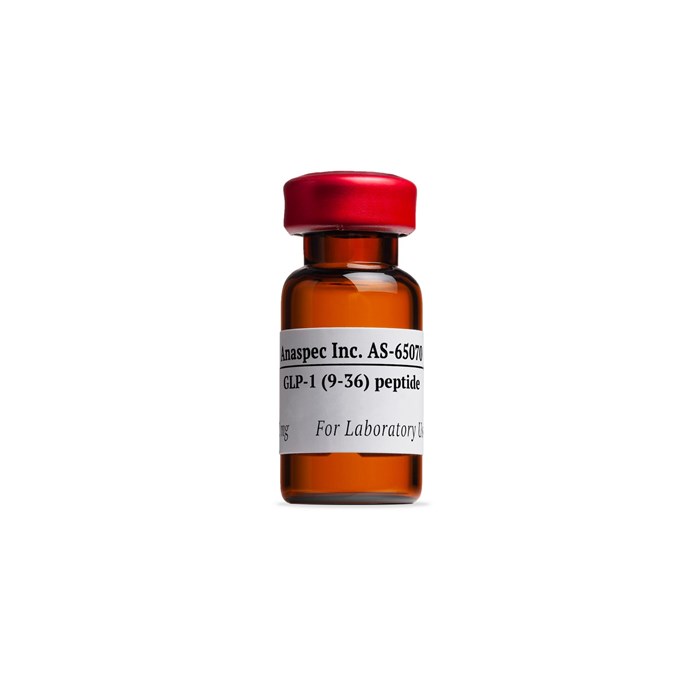Glucagon-Like Peptide 1, GLP-1 (9-36), amide, human, mouse, rat, bovine, guinea pig - 1 mg
- Cat.Number : AS-65070
- Manufacturer Ref. :
-
Availability :
In stock
GLP-1 (9-36) is the result of the rapid degradation of GLP-1 (7-36) amide, by the enzyme dipeptidyl peptidase IV (DPP-4), which is widely expressed in a number of sites, including the endothelial cells of small gut arterioles. GLP-1 (9-36) accounts for the majority of GLP-1 that reaches the system circulation. Whereas GLP-1 (7-36) amide stimulates glucose-dependent insulin secretion and inhibits glucagon secretion, GLP-1(9-36) amide administration had no effect on glucose clearance or insulin secretion in humans. GLP-1(9-36) amide however was shown to exert cardioprotective actions in rodent hearts.
Pyroglutamyl (pGlu) peptides may spontaneously form when either Glutamine (Q) or Glutamic acid (E) is located at the sequence N-terminus. The conversion of Q or E to pGlu is a natural occurrence and in general it is believed that the hydrophobic γ-lactam ring of pGlu may play a role in peptide stability against gastrointestinal proteases. Pyroglutamyl peptides are therefore considered a normal subset of such peptides and are included as part of the peptide purity during HPLC analysis.
Specifications
| Chemistry | |
| Sequence one letter code |
|
|---|---|
| Sequence three letter code |
|
| CAS registry number |
|
| Molecular Formula |
|
| Molecular Mass/ Weight |
|
| Modification | |
| Conjugation |
|
| Quantity & Purity | |
| Purity |
|
| Storage & stability | |
| Form |
|
| Storage Conditions |
|
| Activity | |
| Biomarker Target | |
| Research Area | |
| Sub-category Research Area | |
| Usage |
|
| Source | |
| Source / Species |
|
| Codes | |
| Code Nacres |
|
You may also be interested in the following product(s)



